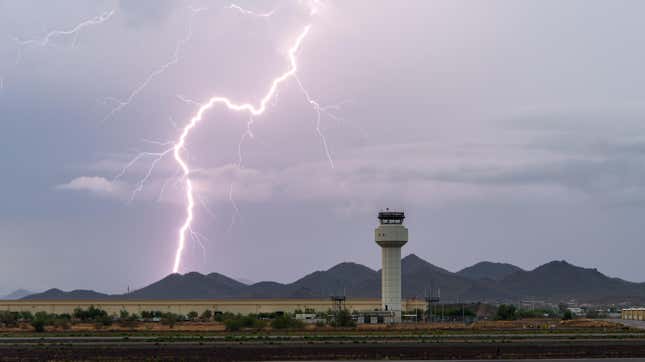
While flying planes are hardened to withstand lightning strikes, airports are typically a cluster of free-standing structures on a flat, open plot of land. The ongoing increase in lightning strikes caused by climate change is a direct danger to facilities and people on the ground. The adage that “lightning never strikes the same place twice” isn’t true, and I’d never want to stand out on the tarmac during a thunderstorm to prove it.
A 2022 study found that 98 ground crewmembers were killed or injured by lightning between 1998 and 2020. These dangers extend past the people spending nearly their entire shift in the open. The study recounted a 2013 incident in which the air traffic control tower at Baltimore Washington International Airport was struck by lightning. The strike injured a controller because one cable designed to take electrical current from a lightning strike to the ground was cut.
The Pentagon is even considering the measures it can take to protect military installations. Lightning strikes could comprise the American military’s capability to wage nuclear war. Wired explains:
The US Department of Defense also cares about lightning, says Caroline Baxter, a senior adviser at the Council on Strategic Risks. “Something that has gone underappreciated is the risk that military installations face from the effects of climate change—including things like lightning,” she says, noting that some states particularly prone to lightning, such as Louisiana and Georgia, also happen to be home to major military bases.
In 2019, lightning damaged a runway at Offutt Air Force Base in Nebraska. Offutt is the headquarters of US Strategic Command—the organization responsible for nuclear deterrence and global strike capabilities. Baxter highlights a 2021 executive order from President Biden, which mentioned the need to assess climate risks to US military installations. “The clarity that comes with getting a direct order has, I think, paved the way for a lot of movement,” she says.
Solutions will undoubtedly be found and implemented to mitigate the worst outcomes of lightning strikes on airports. However, it would be better overall if we could figure out how to stop the atmosphere from getting even hotter and creating more lightning.


